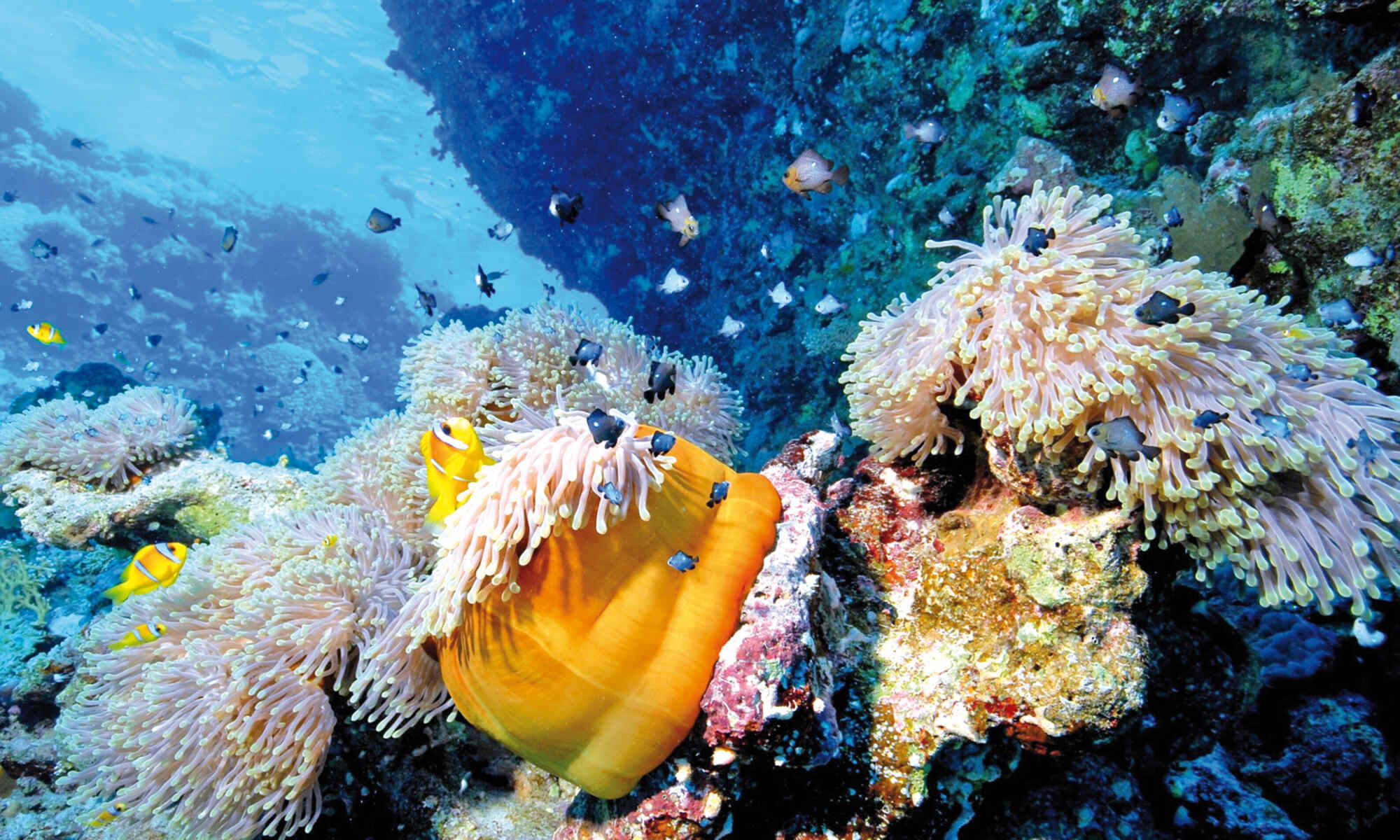
The Gulf of Oman is home to some of the most stunning and diverse underwater ecosystems on the planet. In the depths of its crystal-clear waters, lies a hidden treasure trove of natural wonders – the reefs of the Gulf of Oman.
These reefs, known for their astounding beauty and remarkable biodiversity, have long captivated the hearts and minds of marine enthusiasts and conservationists alike. From vibrant coral formations to colorful fish species, the reefs of the Gulf of Oman offer a glimpse into a world that is as awe-inspiring as it is fragile.
In this article, we will delve into the realm of the Gulf of Oman’s reefs and uncover 11 unbelievable facts that will leave you amazed. From the sheer size of these underwater structures to the unique marine life that inhabit them, prepare to be mesmerized by the wonders that lie beneath the surface of the Gulf of Oman.
Key Takeaways:
- The reefs of the Gulf of Oman are a vibrant underwater paradise, home to rare coral species, diverse marine life, and crucial breeding grounds for many creatures.
- The Gulf of Oman reefs face environmental threats, but also offer opportunities for marine exploration, tourism, and sustainable livelihoods for local communities.
The Gulf of Oman is home to one of the most diverse coral reef ecosystems in the world.
Stretching along the coast of Oman and reaching into the Arabian Sea, the reefs of the Gulf of Oman are rich in biodiversity and teeming with vibrant marine life. From colorful corals to exotic fish species, these reefs are a testament to the beauty and resilience of nature.
The reefs of the Gulf of Oman boast some of the rarest and most endangered coral species.
In these underwater havens, you can find delicate and elusive coral species such as the Dendrophyllia coral and the Elkhorn coral, which are considered critically endangered. Exploring these reefs gives scientists and researchers a unique opportunity to study and protect these precious ecosystems.
These reefs are a paradise for scuba diving and snorkeling enthusiasts.
With crystal-clear waters and a kaleidoscope of marine life, the reefs of the Gulf of Oman offer an unforgettable underwater experience. Scuba divers and snorkelers can swim alongside vibrant coral formations, encounter schools of tropical fish, and spot majestic sea turtles gliding through the water.
The Gulf of Oman reefs are a breeding ground for numerous marine species.
These reefs serve as vital nurseries for various marine creatures, including reef fish, crustaceans, and mollusks. The protected environment allows these species to reproduce and thrive, contributing to the overall health of the marine ecosystem.
The Gulf of Oman is a crucial migratory route for marine mammals.
Whales, dolphins, and other marine mammals rely on the Gulf of Oman as a migration corridor. The rich food sources and warm waters attract these magnificent creatures during their annual migrations, offering unique opportunities for wildlife enthusiasts and researchers alike.
These reefs are adorned with stunning coral gardens.
The underwater landscape of the Gulf of Oman is a sight to behold, with sprawling coral gardens covering large areas of the seafloor. These gardens are a testament to the intricate and delicate balance of life within the reef ecosystem.
The Gulf of Oman reefs face numerous environmental threats.
Like many coral reef ecosystems around the world, the reefs of the Gulf of Oman are under a constant threat from climate change, pollution, overfishing, and destructive fishing practices. Efforts are being made to protect and preserve these vital ecosystems for future generations.
The Gulf of Oman is a hub for marine exploration and research.
Scientists, marine biologists, and conservationists flock to the Gulf of Oman to study its unique reef systems. By gathering data and conducting research, these experts contribute to a better understanding of marine ecosystems and aid in the development of conservation strategies.
The Gulf of Oman reefs offer a glimpse into the past.
The coral formations found in these reefs carry a wealth of information about the history of our planet. By studying these coral records, scientists can gain insights into past climate change events, ocean temperatures, and even ancient civilizations that once thrived along these shores.
The reefs of the Gulf of Oman are a tourism hotspot.
With their stunning beauty and abundance of marine life, the Gulf of Oman reefs attract tourists from all around the world. Snorkeling tours, diving expeditions, and boat trips are popular activities, allowing visitors to witness the wonders of these underwater ecosystems firsthand.
The Gulf of Oman reefs provide livelihoods for local communities.
For the coastal communities of Oman, the reefs of the Gulf of Oman are a source of sustenance and income. Fishing, tourism, and traditional practices such as pearl diving are closely intertwined with the health and preservation of these precious marine environments.
Conclusion
The reefs of the Gulf of Oman are truly a wonder of nature. From their rich biodiversity to their incredible survival in challenging conditions, these reefs have so much to offer. The 11 unbelievable facts we’ve explored highlight their importance and uniqueness. Whether you’re a marine enthusiast, a scuba diver, or simply curious about the wonders of the world, exploring the reefs of the Gulf of Oman is an experience like no other. So, pack your diving gear and get ready to marvel at the beauty and complexity of these remarkable underwater ecosystems.
FAQs
1. What makes the reefs of the Gulf of Oman unique?
The reefs of the Gulf of Oman are unique due to their location, which exposes them to challenging environmental conditions. Despite this, they thrive and support a diverse range of marine life.
2. Are the reefs of the Gulf of Oman accessible to divers and snorkelers?
Yes, the reefs of the Gulf of Oman are accessible to divers and snorkelers. There are various diving and snorkeling spots along the coast that allow visitors to explore these stunning underwater landscapes.
3. Can I expect to see rare and exotic marine species in the Gulf of Oman reefs?
Absolutely! The reefs of the Gulf of Oman are home to a myriad of rare and exotic marine species. From vibrant coral formations to colorful fish and fascinating invertebrates, there is no shortage of marine life to admire.
4. How can I contribute to the preservation of the Gulf of Oman reefs?
You can contribute to the preservation of the Gulf of Oman reefs by practicing responsible diving and snorkeling techniques. This includes avoiding touching or damaging the corals, not littering, and supporting local conservation efforts.
5. Are the Gulf of Oman reefs affected by climate change?
Yes, like many other coral reef ecosystems around the world, the reefs of the Gulf of Oman are facing threats from climate change. Rising sea temperatures and ocean acidification pose significant challenges to their survival.
6. Can I visit the Gulf of Oman reefs year-round?
Yes, you can visit the Gulf of Oman reefs year-round. However, it’s essential to check weather conditions and plan your visit accordingly to ensure optimal visibility and safety.
7. Are there guided tours available to explore the Gulf of Oman reefs?
Yes, there are various guided tours and diving packages available to explore the Gulf of Oman reefs. These tours are often led by experienced professionals who can provide valuable insights about the reefs and the marine life that inhabits them.
8. Can I witness coral spawning events in the Gulf of Oman?
Yes, if you time your visit right, you might be lucky enough to witness coral spawning events in the Gulf of Oman. These captivating events occur annually and are a testament to the extraordinary reproductive abilities of the coral species.
9. Are there any restrictions or permits required to visit the Gulf of Oman reefs?
Depending on the specific location, there may be certain permits or restrictions for visiting the Gulf of Oman reefs. It’s advisable to check with local authorities or tour operators to ensure compliance with any regulations.
10. Can I take underwater photographs or videos in the Gulf of Oman reefs?
Yes, you can take underwater photographs or videos in the Gulf of Oman reefs. However, it’s crucial to do so responsibly, being mindful not to disturb or harm the marine life or the delicate coral formations.
11. Are there any research initiatives focused on studying the Gulf of Oman reefs?
Yes, there are ongoing research initiatives aimed at studying the Gulf of Oman reefs. Scientists and marine biologists are working to better understand these ecosystems, their resilience, and the threats they face, in order to develop effective conservation strategies.
Dive deeper into marine wonders by exploring soirees that promote ocean conservation, marveling at marine biodiversity within national parks, and understanding the devastating impact of coral bleaching. Gulf of Oman's reefs may be unbelievable, but there's so much more to discover beneath the surface. Join us on this journey to uncover the secrets of our oceans, from the vibrant ecosystems to the challenges they face. Together, we can appreciate the beauty and importance of these underwater worlds, and work towards protecting them for generations to come.
Was this page helpful?
Our commitment to delivering trustworthy and engaging content is at the heart of what we do. Each fact on our site is contributed by real users like you, bringing a wealth of diverse insights and information. To ensure the highest standards of accuracy and reliability, our dedicated editors meticulously review each submission. This process guarantees that the facts we share are not only fascinating but also credible. Trust in our commitment to quality and authenticity as you explore and learn with us.


